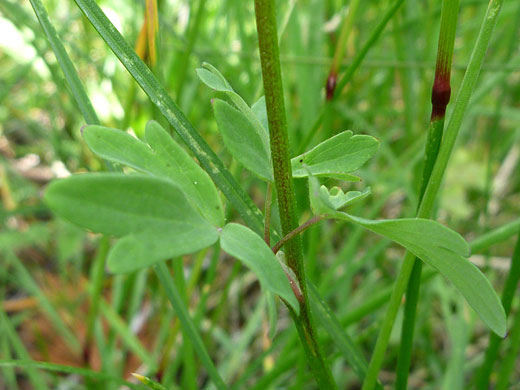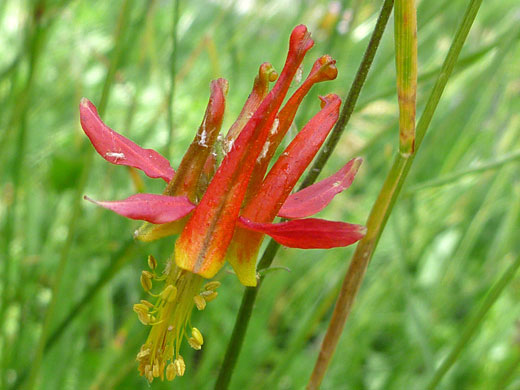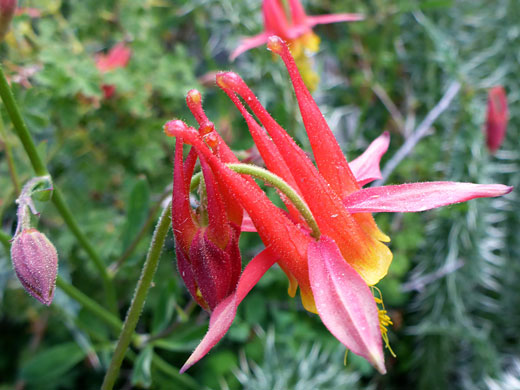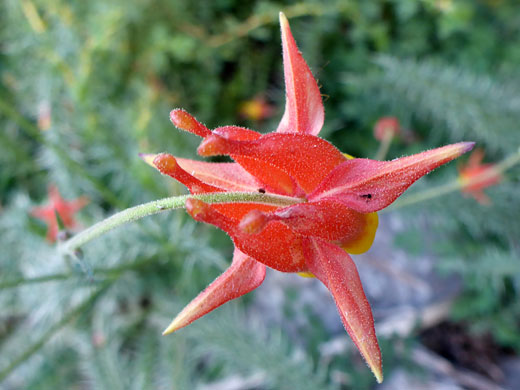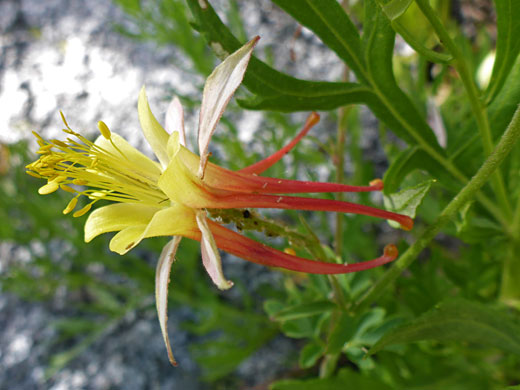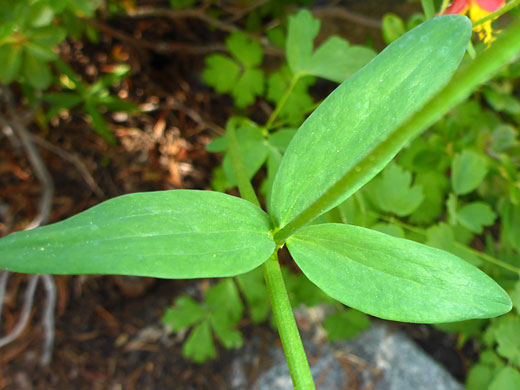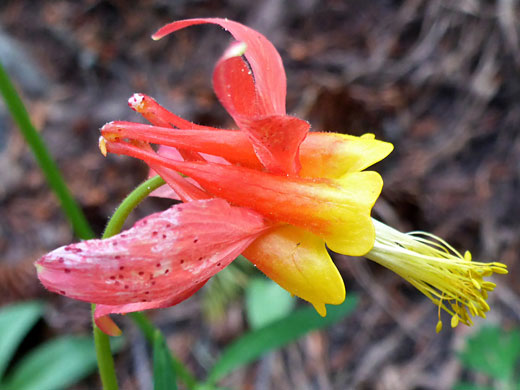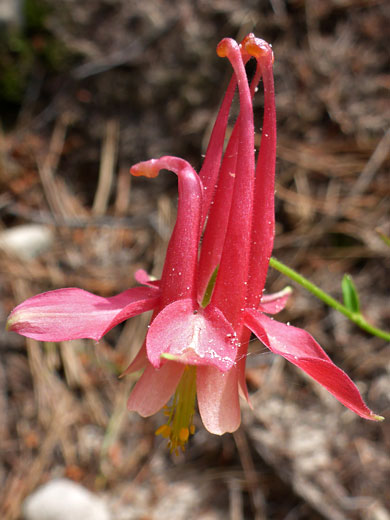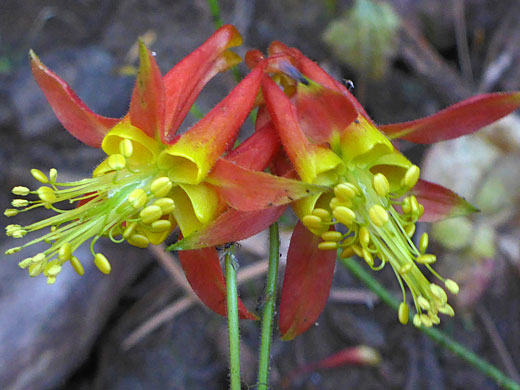Common names:
Crimson columbine, western columbine, red columbine
Family:
Scientific name:
Aquilegia formosa
Main flower color:
Range:
All across the Pacific states and Nevada, plus west Idaho, west Utah, far northwest Wyoming and the southwest corner of Montana
Height:
Up to 3 feet
Habitat:
Moist environments; woodland, chaparral, streambanks
Leaves:
Divided into 3 segments, each of which is subdivided into 3 leaflets (about one inch long), which have 3 lobes
Season:
May to August
Aquilegia formosa produces distinctive, red and yellow flowers, sometimes several dozen per plant. Blooms are pendent, hanging down from the tip of the stems, and consist of five red, lance-shaped sepals pointing forwards, outwards or slightly recurved, between which, at right angles, are five thin, conical petals, mostly red but yellow at the open end. The far end is closed, and extends backwards as a spur. Many greenish-yellow stamens project from inside the center. The nectar is located at the inner tip of the spurs, and so the flowers attract pollinators such as humming birds. The plant has a wide distribution, from Alaska to Utah, favoring moist, woodland environments.
There are three varieties of aquilegia formosa, with distinct geographical ranges. Var formosa is the usual and most widespread form; the other two have shorter petal blades and shorter sepals. Var truncata of southwest California has hairless stems and petioles, while var hypolasia of far south California has hairy stems and petioles.
There are three varieties of aquilegia formosa, with distinct geographical ranges. Var formosa is the usual and most widespread form; the other two have shorter petal blades and shorter sepals. Var truncata of southwest California has hairless stems and petioles, while var hypolasia of far south California has hairy stems and petioles.
All Contents © Copyright The American Southwest | Comments and Questions | Contribute | Site Map



